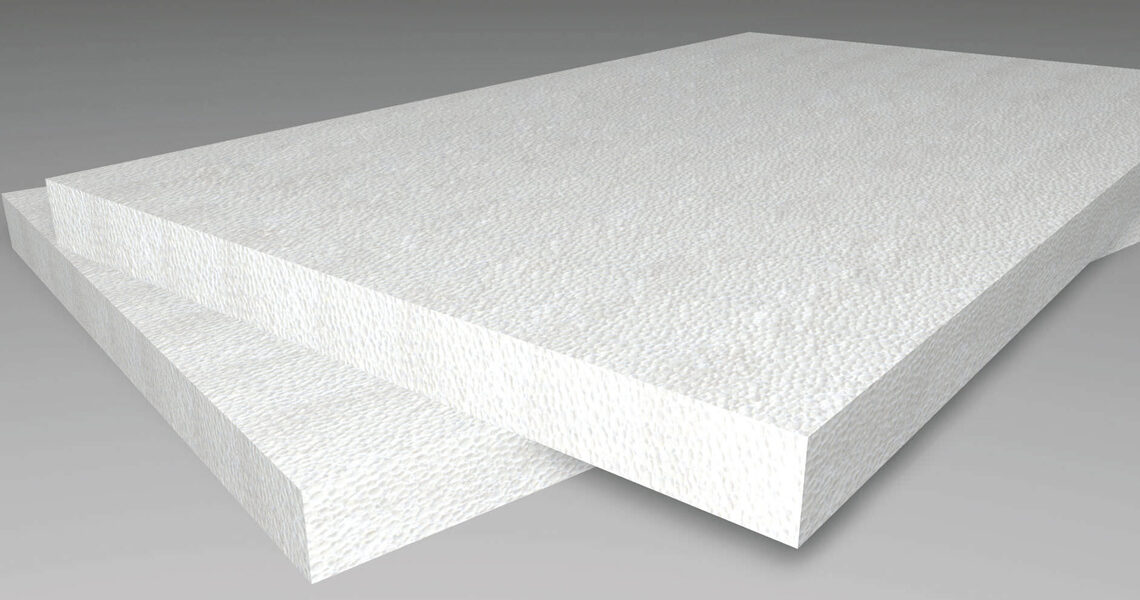
Polystyrene (PS) is a clear, amorphous, nonpolar commodity thermoplastic that is easy to process and that can be easily converted into a large number of semi-finished products like foams, films, and sheets. It is one of the largest volume commodity plastic, comprising approximately seven percent of the total thermoplastic market1. PS is a very good electrical insulator, has excellent optical clarity due to the lack of crystallinity, and has good chemical resistance to diluted acids and bases. It is also easy to fabricate into a large number of finished goods since it is a viscous liquid above its glass transition temperature (Tg) that can be easily molded. However, polystyrene has several limitations. It is attacked by hydrocarbon solvents, has poor oxygen and UV resistance, and is rather brittle, i.e. it has poor impact strength due to the stiffness of the polymer backbone. Furthermore, its upper-temperature limit for continual use is rather low due to the lack of crystallinity and its low glass transition temperature of about Tg = 373 K (100°C). Below its Tg, it has medium to high tensile strength (35 – 55 MPa) but low impact strength (15 – 20 J/m). Despite all these weaknesses, styrene polymers are very attractive large-volume commodity plastics.
Some of its weaknesses can be overcome by copolymerization with other monomers. For example, polystyrene can be copolymerized with methyl methacrylate. The copolymer poly(styrene-co-methyl methacrylate) (PSMMA) has higher clarity and improved chemical and UV stability.
One of the most important styrene copolymers is poly(styrene-co-acrylonitrile) (PSAN). It has much-improved chemical resistance, better heat stability, and improved mechanical properties. However, these copolymers often yield yellow products.
Probably of equal importance are poly(styrene-co-butadiene) (SBR, SBS) and poly(styrene-co-acrylonitrile-co-butadiene) (ABS). Both copolymers have very high stress and impact resistance and ABS has higher tensile strength than pure PS.
To increase the heat resistance, styrene is sometimes copolymerized with small amounts of maleic anhydride or it is copolymerized with this monomer to an alternating structure. The copolymer poly(styrene-co-maleic anhydride) (PSMA) has a higher Tg than pure polystyrene (400 – 430 K), improved heat resistance, and high dimensional stability.
Many styrene derivatives have been synthesized on a laboratory scale and some have been extensively investigated. However, no other styrene polymer has become a large-volume commodity thermoplastic. Among those that are commercially produced are α-methylstyrene, o-, m-, and p-methylstyrene, methoxystyrene, chlorostyrene, divinylbenzene and p-divinylbenzene. The latter is used as a cross-linking agent in a large number of different polymer materials.
Polystyrene is a non-biodegradable plastic and resistant to photolysis. It is a major contributor to the debris in the ocean. Although recyclable, polystyrene is not recycled in many parts of the world. The biggest problem is expandable polystyrene (EPS); due to its low density, it takes up a relatively large amount of space in landfills.
In recent years, the (food) packaging industry has developed alternative insulating plastics for thermal applications, like Versalite which is an expanded polypropylene (PP) that can be recycled right along with other PP products in the general recycle stream. We expect other lower-cost and lower-density resins to gain market share in traditional large-volume applications of expandable polystyrene.
COMMERCIAL POLYSTYRENES
Polystyrene is one of the most important commodity plastics. The production volume of polystyrene and styrene copolymers is several million tons per year. It is sold under various trade names, including Styrofoam™, Styropor®, and Styron™
The three most important grades of styrene are:
GPPS: General purpose polystyrene, also known as crystal-clear polystyrene, is a fully transparent, rigid, and rather brittle low-cost thermoplastic made from styrene monomer. GPPS is a solid product manufactured in the form of 2-5 mm pellets.
HIPS: High impact polystyrene contains usually 5 to 10% rubber (butadiene) and is used for parts that require high(er) impact resistance. HIPS is a graft copolymer having polystyrene sidearms. The grafting occurs when some of the radicals react with the double bonds of the polybutadiene.
EPS: Expandable polystyrene consists of micro-pellets or beads containing a blowing agent (usually pentane). The expanded or foamed polystyrene is thermally insulating, has high impact resistance and good processability.
Styrenic Copolymers and their blends are considered engineering thermoplastics because their properties can be tailored over a wide range for a large number of applications with a broad range of processing methods which permits the manufacture of high quality, very durable plastic products suitable for many demanding applications.
APPLICATIONS
Polystyrene is a polymer that is cheap and easy to process. It is the material of choice for many applications including food packaging, disposable consumer plastic goods as well as parts for optical, electronic/electrical, and medical applications. A large variety of products are formed by injection molding including dining utensils, plastic cups, housewares, toys, CD cases, cosmetic containers, covers, and fixtures.
Expandable polystyrene, either crystal polystyrene2 or styrene copolymers soaked with a blowing agent (usually pentane), are used to produce various foamed products, like disposable drinking cups, egg cartons, trays, fast-food containers, cushioned packaging, and thermal insulation for the construction market. Medical applications include pipettes, Petri dishes, and medicine containers.